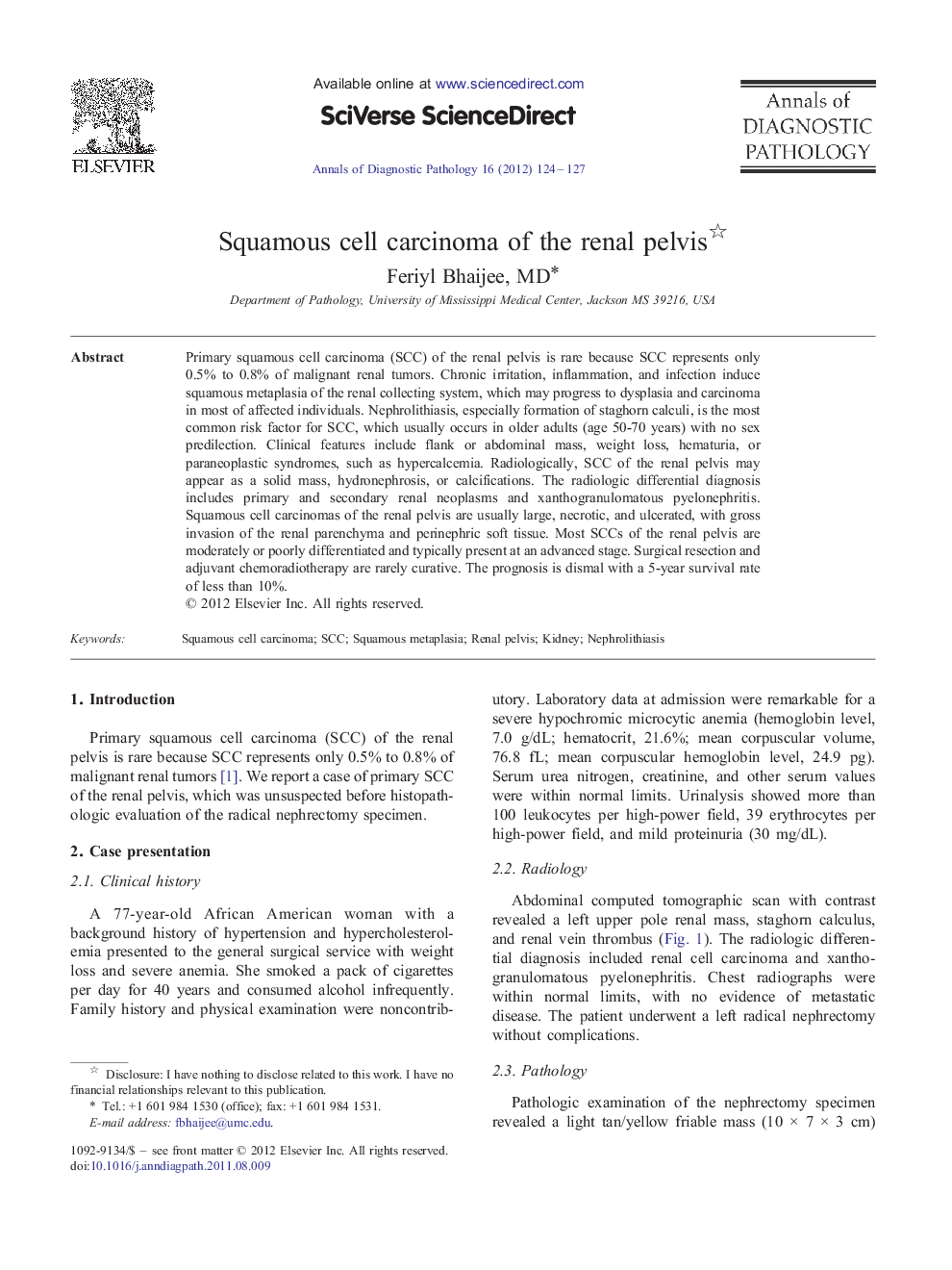| Article ID | Journal | Published Year | Pages | File Type |
|---|---|---|---|---|
| 4130020 | Annals of Diagnostic Pathology | 2012 | 4 Pages |
Primary squamous cell carcinoma (SCC) of the renal pelvis is rare because SCC represents only 0.5% to 0.8% of malignant renal tumors. Chronic irritation, inflammation, and infection induce squamous metaplasia of the renal collecting system, which may progress to dysplasia and carcinoma in most of affected individuals. Nephrolithiasis, especially formation of staghorn calculi, is the most common risk factor for SCC, which usually occurs in older adults (age 50-70 years) with no sex predilection. Clinical features include flank or abdominal mass, weight loss, hematuria, or paraneoplastic syndromes, such as hypercalcemia. Radiologically, SCC of the renal pelvis may appear as a solid mass, hydronephrosis, or calcifications. The radiologic differential diagnosis includes primary and secondary renal neoplasms and xanthogranulomatous pyelonephritis. Squamous cell carcinomas of the renal pelvis are usually large, necrotic, and ulcerated, with gross invasion of the renal parenchyma and perinephric soft tissue. Most SCCs of the renal pelvis are moderately or poorly differentiated and typically present at an advanced stage. Surgical resection and adjuvant chemoradiotherapy are rarely curative. The prognosis is dismal with a 5-year survival rate of less than 10%.
